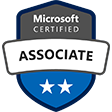
Course Overview:
Learn how a Modern Desktop Administrators deploys, configures, secures, manage, and monitors devices and client applications in an enterprise environment. This is a hands-on, instructor led Bootcamp focusing on the real world responsibilities of a Modern Desktop Administrator and covering the information needed for the certification exams, which are administered while attending.
If you’ve passed Exam 70-698: Configuring Windows 10 (retired March 31, 2019) you only need to take MD-101 to earn this new certification.
This certification is one of the workload administrator certification required for the Microsoft 365 Certified: Enterprise Administrator Expert certification.
Dates/Locations:
No Events
Duration: 10 Days
Course Content:
-
- Module 01. Installing Windows
- Module 02. Updating Windows
- Module 03. Post-Installation Configuration and Personalization
- Module 04. Configuring Peripherals and Drivers
- Module 05. Configuring Networks
- Module 06. Configuring Storage
- Module 07. Managing Apps in Windows 10
- Module 08. Configuring Authorization & Authentication
- Module 09. Configuring Data Access and Usage
- Module 10. Configuring Advanced Management Tools
- Module 11. Supporting the Windows 10 Environment
- Module 12. Troubleshooting the Windows OS
- Module 13. Troubleshooting Files & Applications
- Module 14. Troubleshooting Hardware and Drivers
- Module 15. Planning an Operating System Deployment Strategy
- Module 16. Implementing Windows 10
- Module 17. Managing Updates for Windows 10
- Module 18. Device Enrollment
- Module 19. Configuring Profiles
- Module 20. Application Management
- Module 21. Managing Authentication in Azure AD
- Module 22. Managing Devices and Device Policies
- Module 23. Managing Security
Prerequisites:
-
-
- Microsoft 365 Certified Fundamentals (M-MS900)
-
Target Audience:
IT professionals who perform installation, configuration, general local management and maintenance of Windows 10 core services. Candidates may also be familiar with enterprise scenarios and cloud-integrated services.
Comments
Latest comments from students